

The Distributed Computing Systems (DCS) Programme has been in existence for almost five years and is now entering the final phase. From 1 September 1982, no new grants were being issued under the Programme; distributed computing is now supported as mainstream computer science. The Programme however continues to be actively co-ordinated and supported by RAL. At the moment it is scheduled to terminate in September 1984.
Increasing attention is being paid to transferring the results of the Programme into industry and the OCS Industrial Coordinator plays a key role in this. Technology transfer is achieved by:
A successful conference was held at the University of Strathclyde in July at which the results of the Programme to date in a limited number of key technical areas were presented. 135 people attended of whom about 30 were from industry. A follow-up conference specifically for industry is being organised and a further general conference which will present results in other key areas is being planned for June 1983. Details of these meetings are available from the DCS Academic Coordinator at RAL.
The technical workshop programme continues to be a key means of fostering links between research groups. Some six meetings have been held during the year, on topics ranging from Local Area Networks to Formal Methods in Computer Science.
DCS support staff have been heavily involved in the Cambridge Ring harmonisation exercise which has led to the publication of two further volumes in the rainbow books series (available from the Joint Network Team at RAL); one is concerned with the definition of Ring hardware, the second with the protocols commonly used. Some 15 Cambridge Rings have now been delivered to DCS research groups and are fully operational.
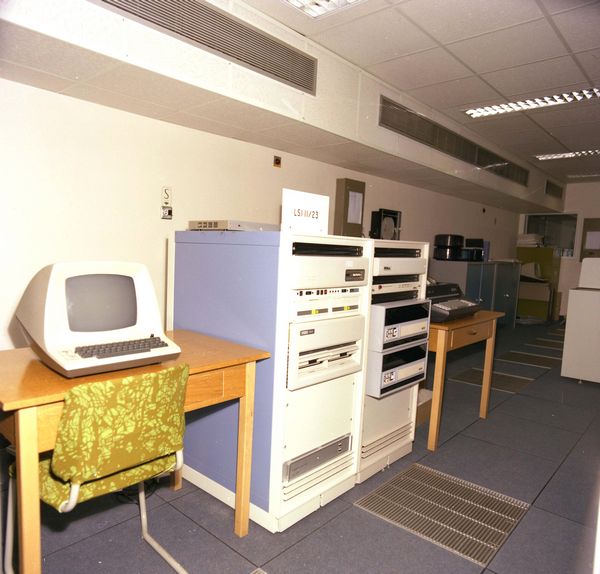
The development of software to link systems running the UNIX operating system to X25 networks continues at the University of York under an EMR agreement from the Laboratory. Field trials are in progress at RAL and the University of Newcastle and DCS support staff at RAL are heavily involved in them.
Detailed descriptions and progress reports on each of the projects in the programme are contained in the DCS Annual Report, copies of which are available from the DCS Academic Coordinator at RAL.
Projects associated with the Engineering Board Computing Committee are co-ordinated by a group within the Laboratory. The group is responsible for providing software and for supporting university researchers using this software, in a wide range of applications. Advice is provided and the projects are monitored by a series of Special Interest Groups. These consist of experts in the appropriate field drawn from both universities and industry as well as RAL. Special Interest Groups are currently concerned with Tools for Interactive Programs, Finite Element Analysis, Electromagnetics, Electric Circuit Design, Artificial Intelligence and Control Engineering. In the case of the last two, all work is done outside RAL on contracts managed by Laboratory staff.
This Special Interest Group is concerned with the provision of software to be used in interactive applications. The software is aimed at the non-professional programmer in order to reduce the amount of duplicated effort and to increase the quality of the man-machine interface. After surveys carried out by RAL staff, the Group has recommended the purchase of geometric modelling and command handling software representing the 'state of the art' for the multi-user mini-computers. This software will be available soon. The finite element pre- and post-processors FEMGEN and FEMVIEW are now supported by this Group. The latest versions have been released and include an improved set of interfaces to analysis programs and other software such as geometric modellers.
Work at RAL in the area of electromagnetic field computation has continued, supported by the Special Interest Group for Electromagnetics. The techniques that were initially developed to support the design of experiments for particle physics have continued to 'be extended the better to match the requirements of electrical engineers in the universities. This has enabled researchers to carry out previously impossible computations, for example the full three-dimensional analysis at Imperial College of the fields in a four pole, 81 slot, electric motor. Fig 3.2 shows a hidden line display of just part of the model to indicate the complexity of this analysis.
Compeda Ltd marketed RAL electromagnetics software worldwide. There has been continued expansion in their sales particularly in the USA where both the national laboratories and industry have acquired programs.
The Engineering Board also supports the development, at the Laboratory, of programs for eddy current calculations in three dimensions. This has proved a challenging project and several fundamental developments have occurred. As part of this project, a three-day seminar was held at the Laboratory in April which attracted contributions from universities and industry in the UK, Europe and the USA.
With the introduction of the ICL PERQ single user minicomputer, some preliminary experiments exploiting its fast, high resolution, interactive graphics capabilities have been carried out. These experiments include the development of a code for solving electromagnetic field problems featuring interactive finite element mesh generation and editing.
Projects associated with this group are the Finite Element Library and package support. In order to solve a non-standard partial differential equation by the finite element method a large amount of software is required: for example, tasks such as matrix manipulation, assembly and solution. The basic level of the library (level 0) contains precisely this type of software and therefore significant savings in time can be achieved when writing finite element programs by using the library. Above this basic level there is a set of example programs. These illustrate the programming philosophy and numerical techniques involved in using the library. These example programs have been significantly extended since the first release and now include the subjects of forced vibration of elastic solids and numerical inclusion of boundary conditions. In order that research workers may fully benefit from this software, practical courses are run on the finite element method and programming techniques using the library. The library is to be distributed by the Numerical Algorithms Group (NAG) as part of their software range and should, therefore, reach a far larger community.
Packages for standard finite element engineering calculations are supported by RAL staff. These include ASAS, Bersafe and Nastran. Initially, Nastran was provided in support of major SERC projects (the mm wave telescope) but it provides advanced facilities that are proving attractive to engineers in the universities.
An important part of the work of this Special Interest Group has been in the organising of colloquia and workshops in the field of finite element analysis. The last such meeting was on Free Surface Problems.
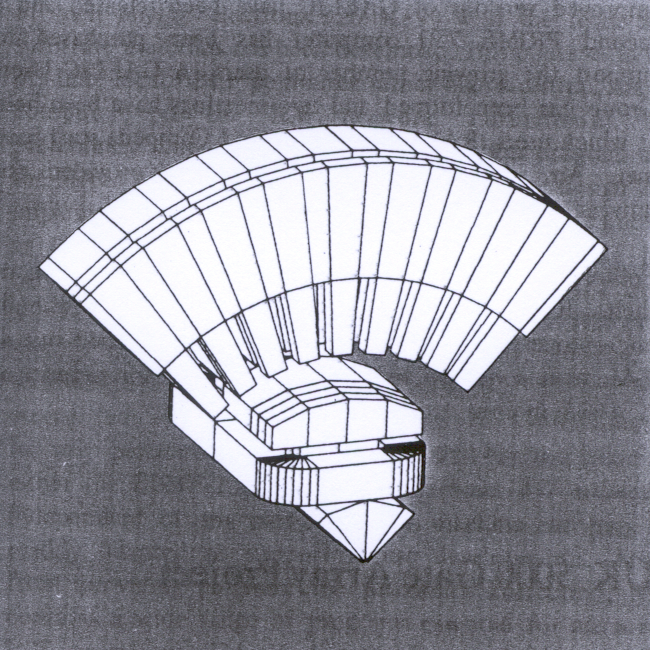
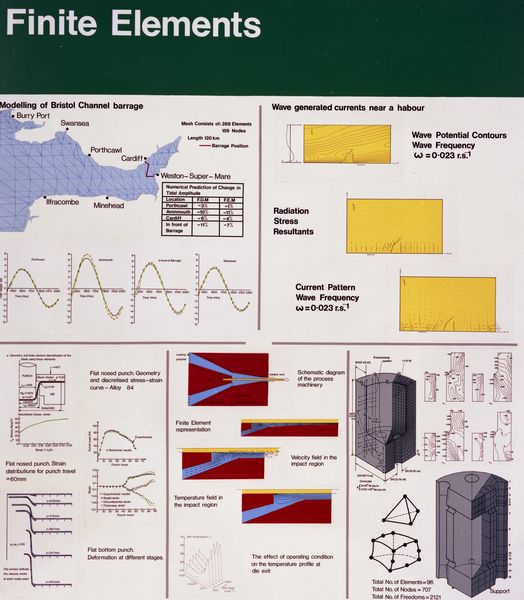
1982 saw the establishment of a new, reconstituted Electric Circuit Special Interest Group (ECSIG), which reports to the Engineering Board Computing Committee (EBCC), and advises EBCC on the provision of software and specialised hardware to assist scientists and engineers in universities and polytechnics in the design, implementation and test of microelectronic, electronic and electrical circuits and systems. ECSIG set up four Working Groups to report on requirements for IC Design Tools; Logic Simulators and High Level Languages; Analogue System Design; and Device and Process Modelling. The reports on IC Design Tools and Logic Simulation and High Level Languages were combined by RAL staff to form a proposal to EBCC for a major enhancement to the tools for IC design.
A number of recent advances in computer hardware technology have led to the introduction of relatively inexpensive, powerful, highly interactive single-user computer systems. If such systems are interconnected by high-speed local and wide-area networks, a potent interactive computing environment is obtained which may be expected to change dramatically the way in which computers are used in the coming decade.
In order to exploit this new technology, SERC recognised a need for a co-ordinated plan of hardware and software development which would provide a vastly improved computing environment to the user. It was also recognised that it was important to prevent software duplication, an inherent danger with a large number of single-user systems dispersed throughout the UK, and to improve the means of both software transfer and communications between users. A further aim was to facilitate the transfer of this type of technology to UK industry.
In order to achieve these aims, the SERC Common Base Policy for single-user systems was formulated. The policy envisaged the provision of a common hardware and software base for single-user systems. The common base may be expected to evolve in response to continuing technological innovation and advances in computing methods, but the current definition includes the following:
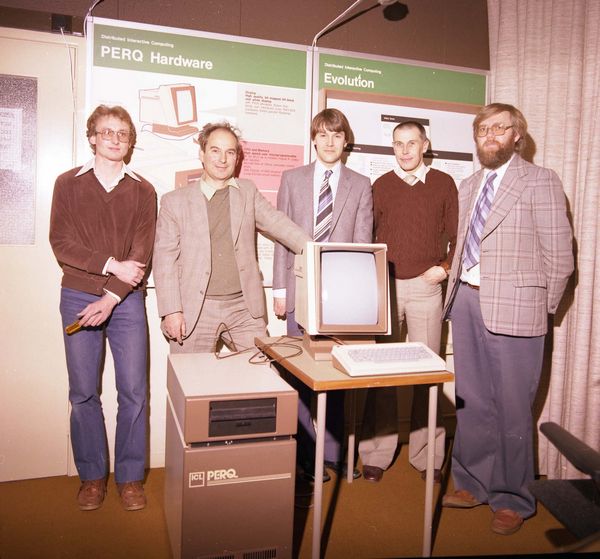
Thus, in the near future the university research worker is likely to work in a computing environment which combines the advantages of a personal computer, with fast response and a flexible and efficient user interface, with the accessibility of specialised software and hardware resources provided by local and wide area networks.
The following sections review the progress made towards realisation of the objectives of the Common Base Policy.
So far, 90 PERQ systems have been ordered and 88 delivered. Most of these systems were initially delivered with 256 Kbyte store, but are now being upgraded to 1 Mbyte. Systems are initially delivered to RAL and tested before installation at their ultimate destinations. Essentially all authorised systems have now been installed in the appropriate universities.
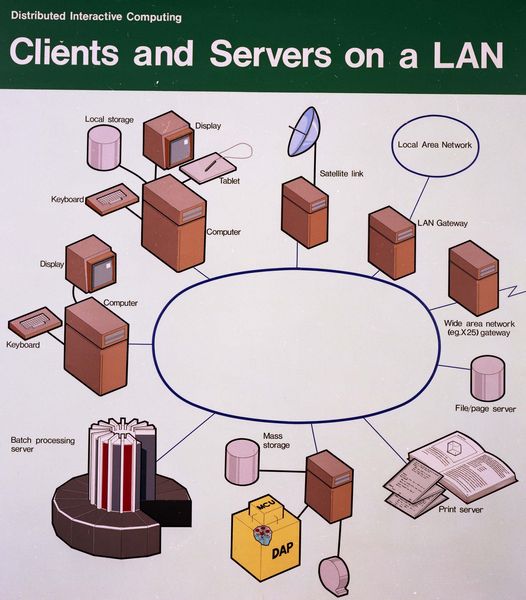
The current PERQ software consists of the Perq Operating System (POS); Pascal and Fortran compilers; a screen-oriented editor; a rudimentary debugger; and miscellaneous utility programs for me manipulation. The Perq Operating System has been designed specifically for the PERQ and does not have the extensive supporting software libraries of more established products.
The Unix operating system has been adopted as the SERC Common Base Policy standard because of its wide acceptance among computer users, especially in universities and research laboratories. There is an extensive set of Unix utilities for the development, maintenance and documentation of computer programs, supported by active European and international user groups. The Unix operating system has an inherent flexibility which derives from its modular structure: efficient tools for common tasks can be amalgamated, using the Unix Shell language, to satisfy particular requirements. Furthermore, Unix is a multi-process operating system, whereas POS is a single process system and therefore does not take advantage of the full capabilities of the PERQ.
In 1981, SERC signed a memorandum of agreement with ICL to collaborate on software development for the PERQ and as part of that collaboration a number of alternative methods of implementing Unix were discussed. A number of possible strategies emerged and it was finally decided to pursue two of them in parallel:
Microcode-Unix has been chosen as the version that will be initially released for field trials.
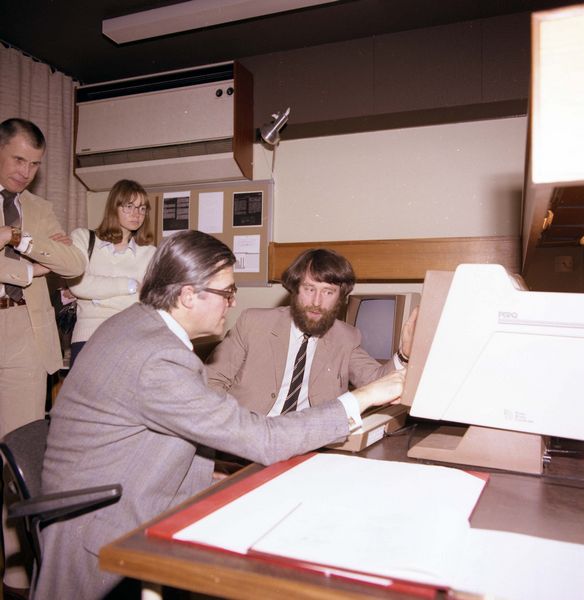
An important component of the SERC Common Base Policy for single-user systems is that access to shared software and resources should be provided by local and wide-area networks. Hence, there is a requirement to provide an interface between a PERQ and a Cambridge Ring, the local area network (LAN) adopted as the Common Base Standard. A hardware interface has been developed at RAL which allows the ring to be accessed via the PERQ IEEE488 bus, or GPIB (General Purpose Interface Bus). The interface unit is designed to match the Type I, or '50-way' encoded interface. At present, six prototypes have been constructed at RAL and a contract has been placed for construction of 50 interface units.
The Yellow Book contains the definition of a Transport Service (TS) Protocol. Transport Service provides processes that wish to communicate with an interface which is consistent across all underlying networks in such a way that users are insulated from the peculiarities of particular networks and their low-level protocols. SERC intend to provide a Yellow Book Transport Service over Cambridge Rings and over SERCnet which will result in a transparent extension from local to wide area networks.
York University have been contracted to implement software on the PERQ which will provide Transport Service, FTP, JNT mail and X29/TS29 remote login facilities over X25. The Transport Service protocol handler runs in an LSI II front end processor, which would be connected to the host PERQ by a DR11-C parallel interface and PERQ LINK board. This solution may not be the cheapest in the longer term and both Edinburgh Regional Computer Centre and York have EMR contracts to investigate cheaper solutions.
The Computer Board recently purchased 30 PERQs, with options on a further 20. Queen Mary College London has been designated as the primary support site and PERQs have been distributed to sites where SERC PERQs have already been placed, so Computer Centres could provide support for both CB and SERC PERQs.
The opportunity for co-operation between SERC and the Computer Board has been recognised and SERC are discussing with the Board and with the QMC support team the possible forms of such co-operation. So far, the following areas have been identified: User support, documentation and co-ordination of software development to prevent duplication of effort.
The PRIME 400 computer has now completed its first year of service to the five local schools (Wantage sixth form; St. Birinus, Didcot; Abingdon College of Further Education; Wallingford School (Upper); and Abingdon School). The terminals located at Abingdon College of Further Education are also being used by lecturers and students from John Mason School and Larkmead School.
During the year the store on the computer has been increased from 512K to 892K and the number of old Newbury and Tektronix terminals at the schools has been increased to 17, with five at Wantage and three at each of the other four schools. There are now about 80 students studying A level computer science at the schools using the PRIME. More than half are from Wantage but the other schools are starting to increase their numbers now they have better facilities.
It has been noticeable over the past year that both teachers and students have been steadily moving away from the popular but poorly structured languages like BASIC in favour of FORTRAN77 and PASCAL. Recently there has also been a marked increase in interest in the use of software tools, although unfortunately the full facilities available in software tools cannot be used on the old fashioned terminals at present provided for the schools.
Twelve students came for work experience for four weeks during the summer. For the first time the Laboratory received students from Abingdon College of Further Education, St. Birinus and Wallingford as well as seven from Wantage. All these students had just completed their first year of an A level course in computer science. All the students worked for one week in each of the following areas: Databases on the PRIME, text processing on the GEC, computer graphics and telecommunications.
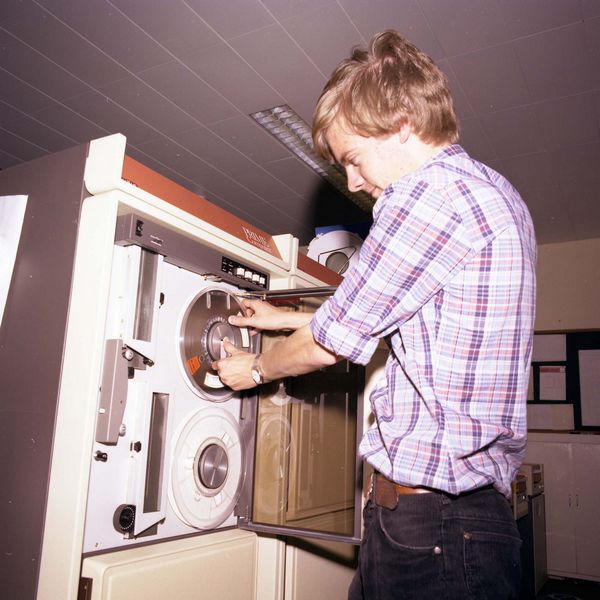
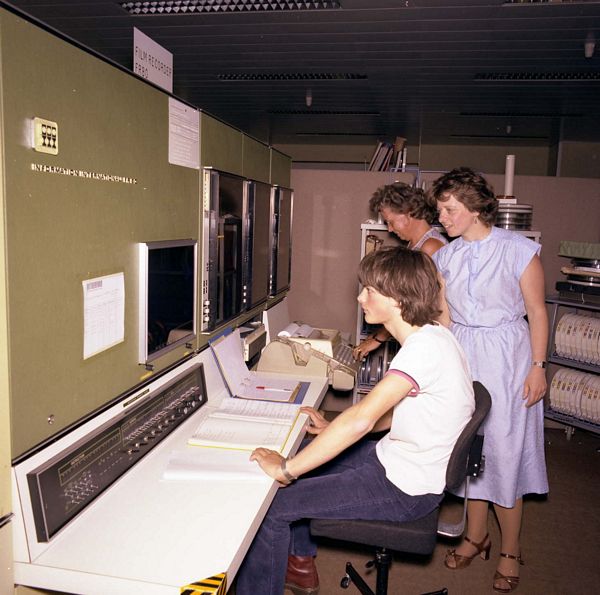
Students from the Wantage sixth form come to the Laboratory once a week to dump the filestore from disk to tape. This provided a backup of the filestore in case of accidental deletion of a file or head crashes of the disk drive. They also handle the accounts and resource management. Students from Abingdon College of Further Education have taken a special interest in the software tools subsystem which they maintain and about which they provide advice to other users. Students at Abingdon School make heavy use of PASCAL and have taken responsibility for a robot simulator program called KAREL which consists of about 8,000 lines of PASCAL. The KAREL simulator provides a well structured language to allow the user to move the robot around the screen, moving objects and interacting with a previously defined environment. It should provide an educational aid to teachers trying to introduce students to the concepts of structured programming.
In July, students from the schools organised a display of some of the work they have done using the PRIME computer and their own micros. This was held in the R27 Colloquium and was well attended by RAL staff, by parents, teachers, students and Oxfordshire educationists. It provoked a lively discussion about the availability of the resources and the merits of the A level computer science course.